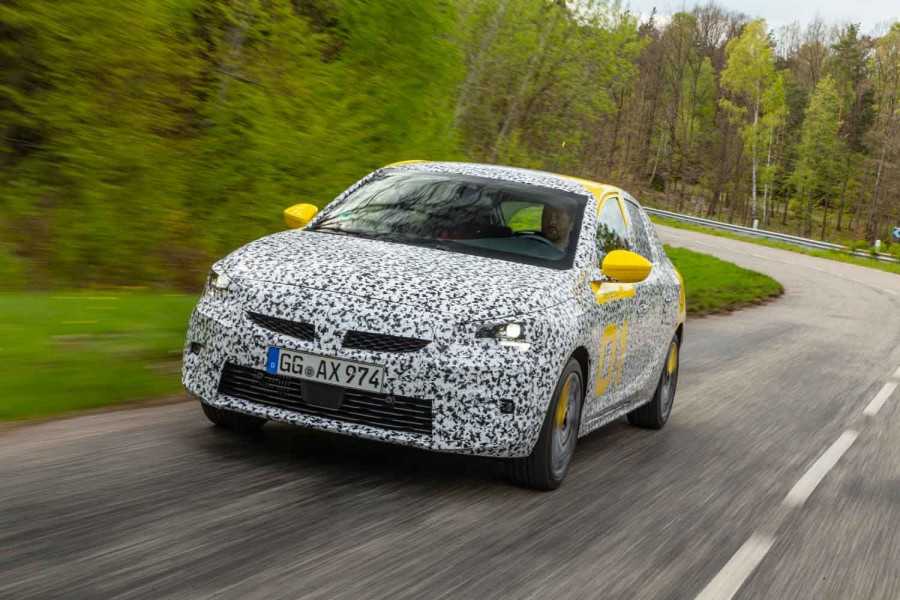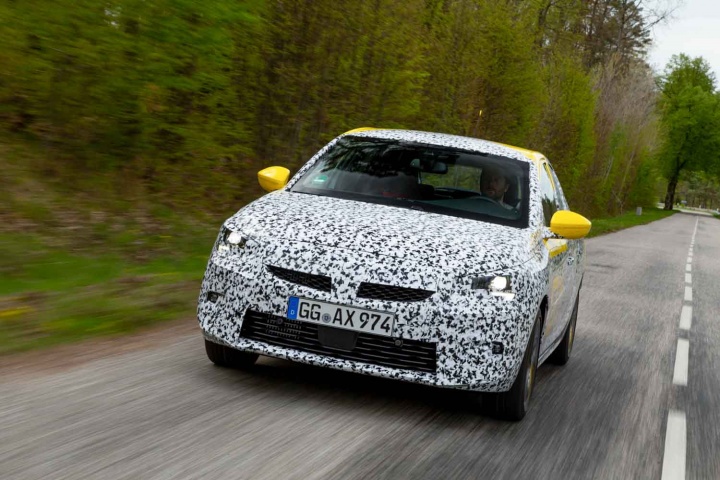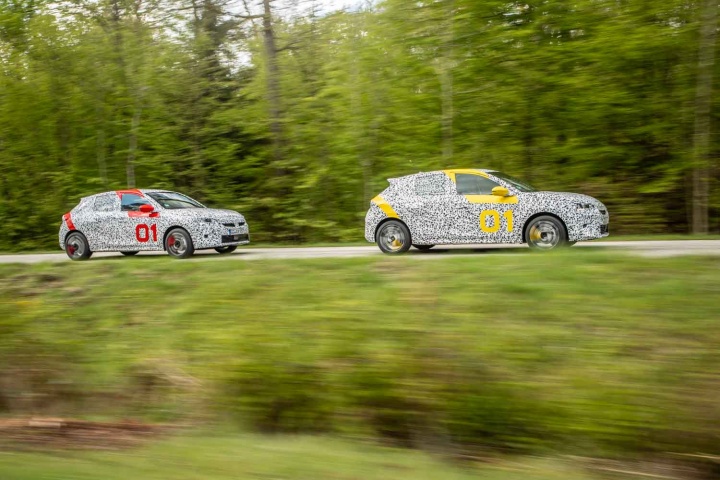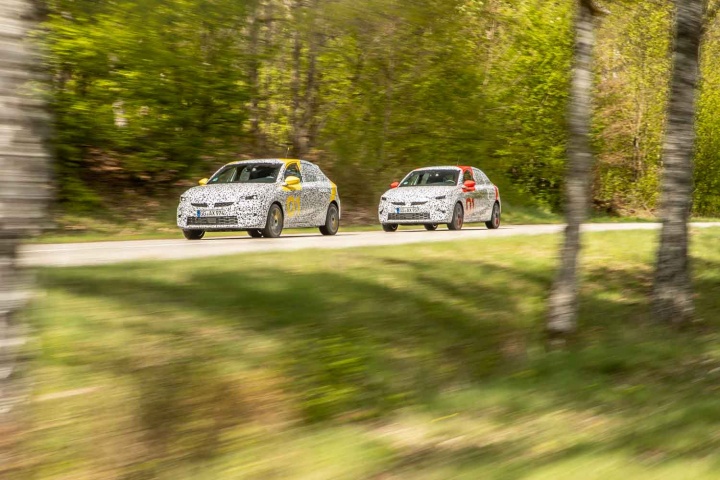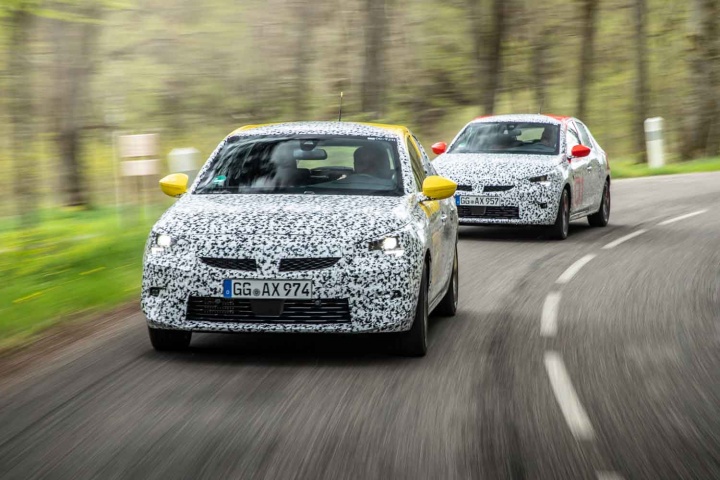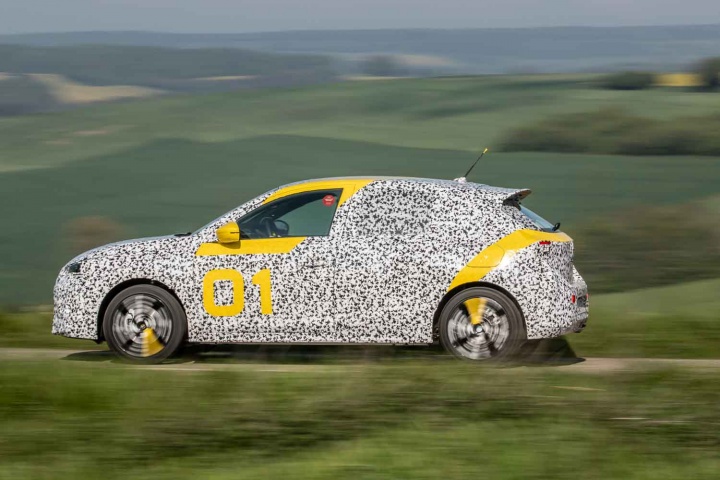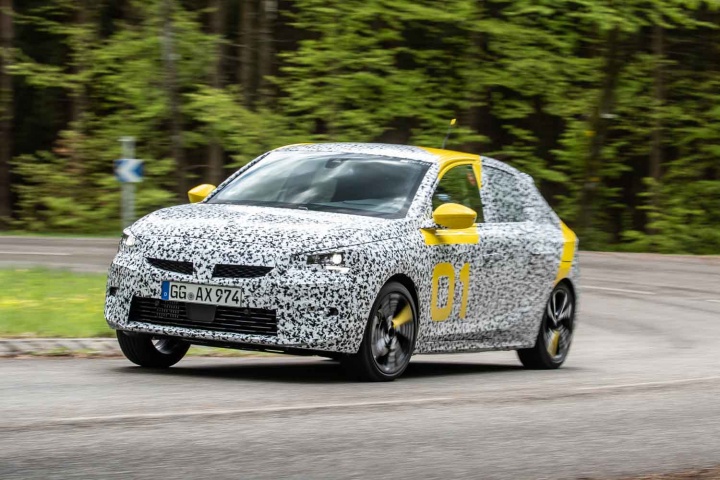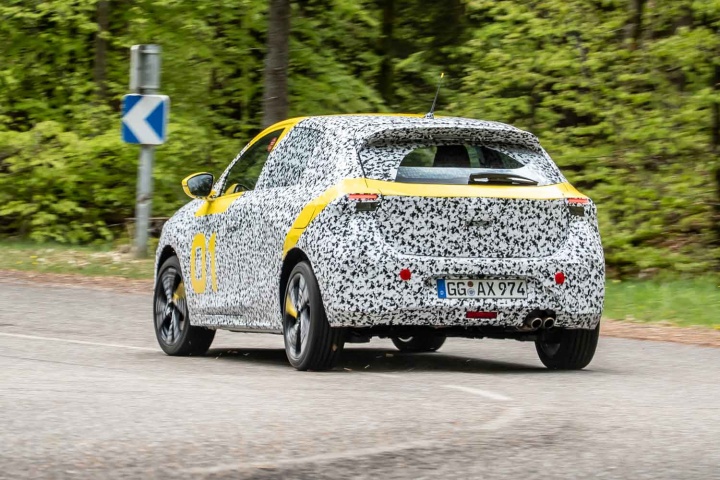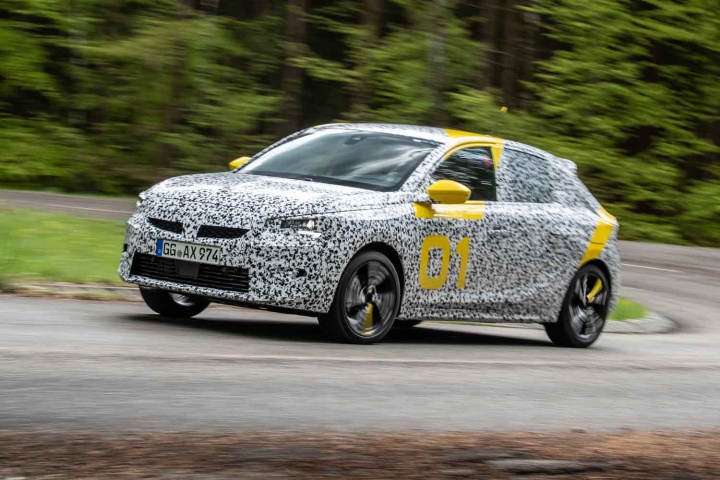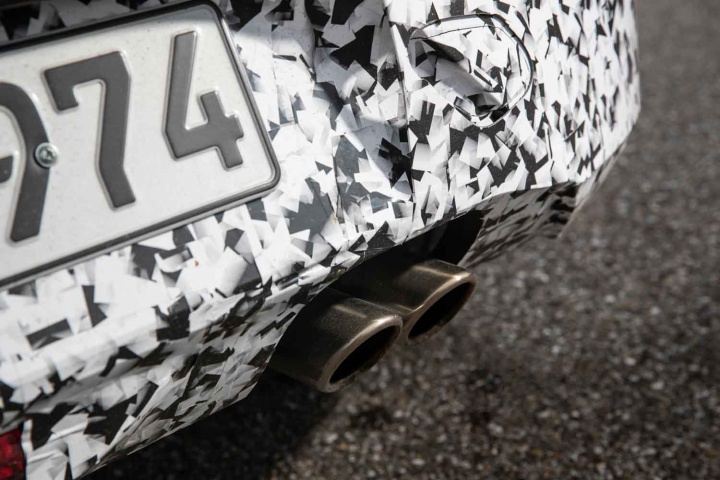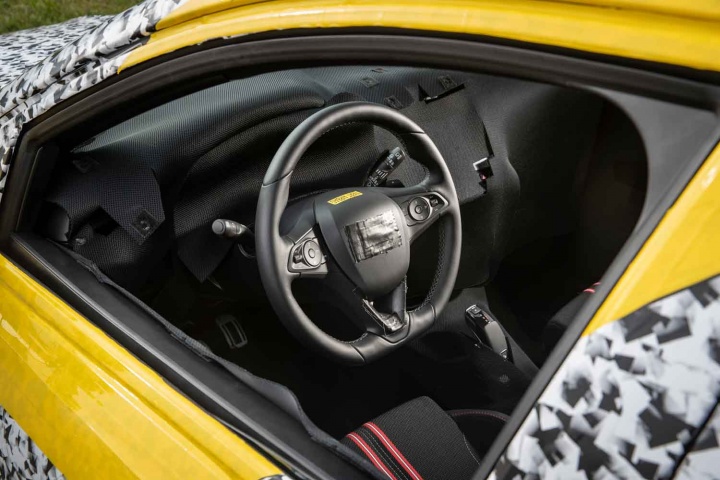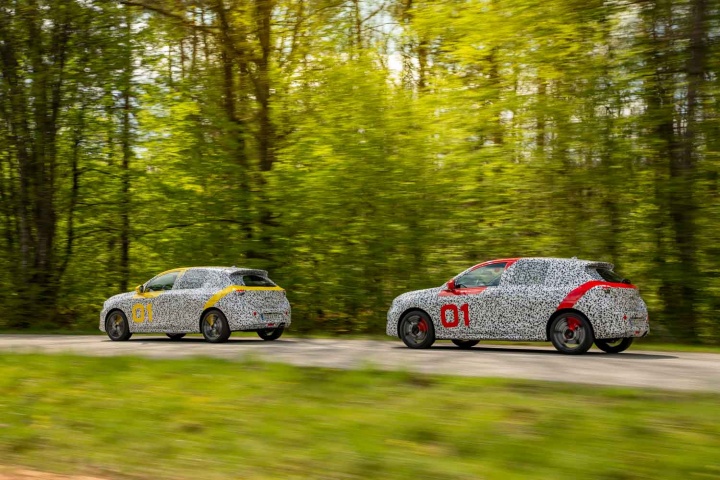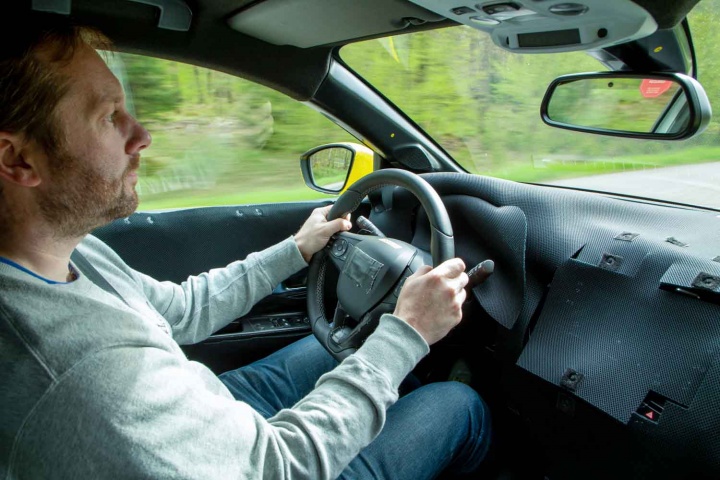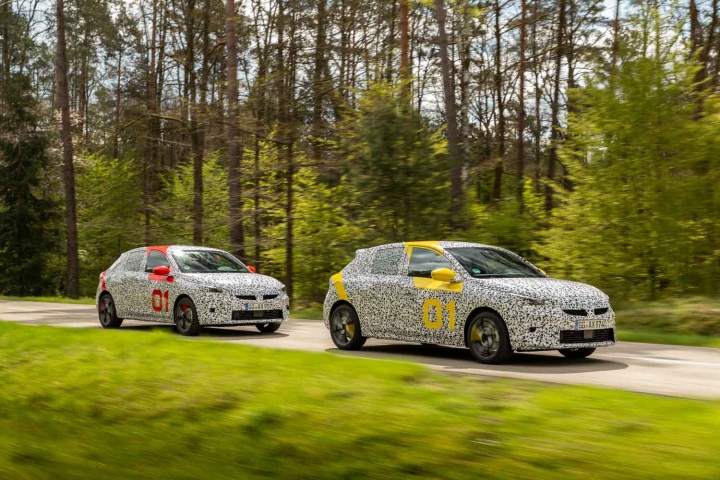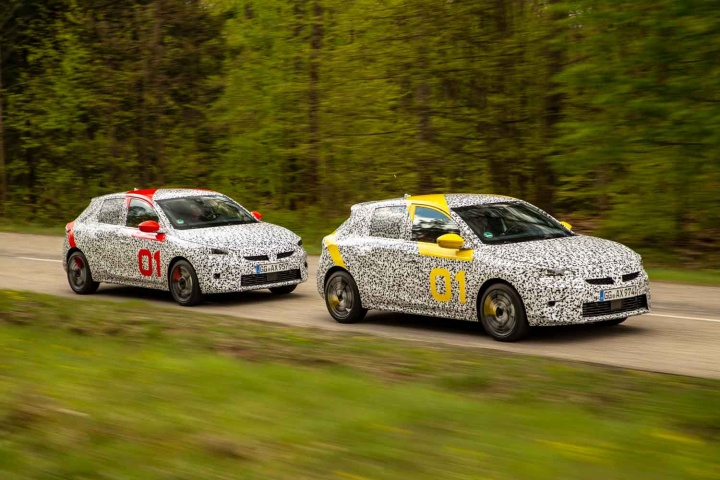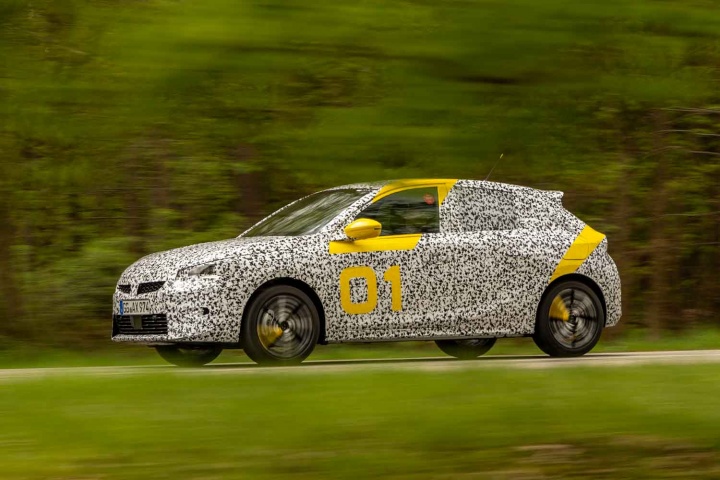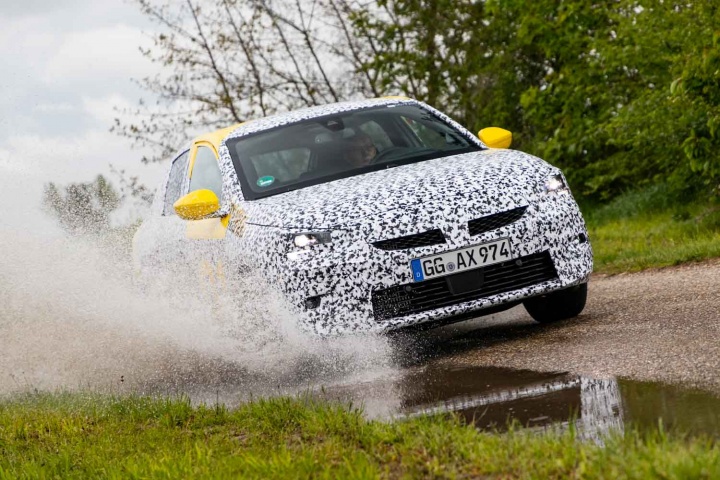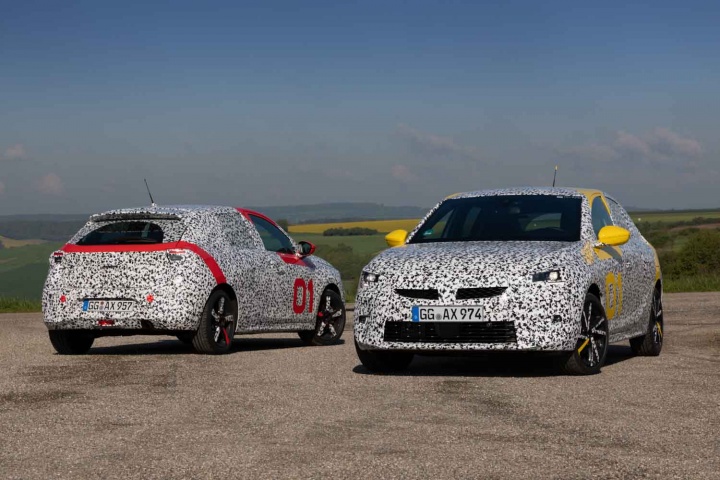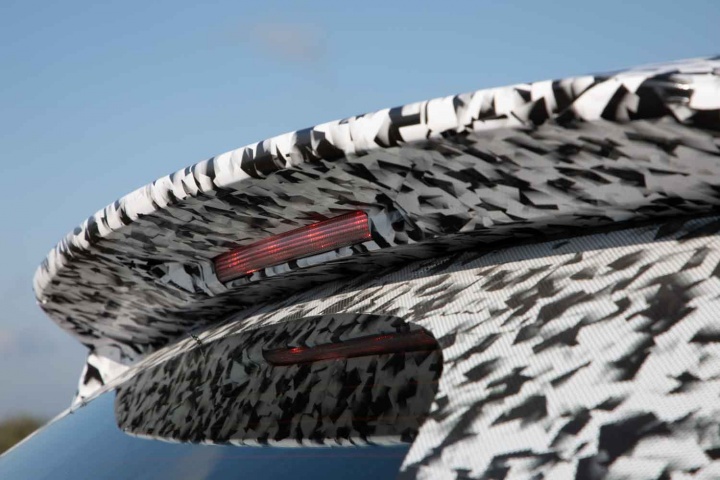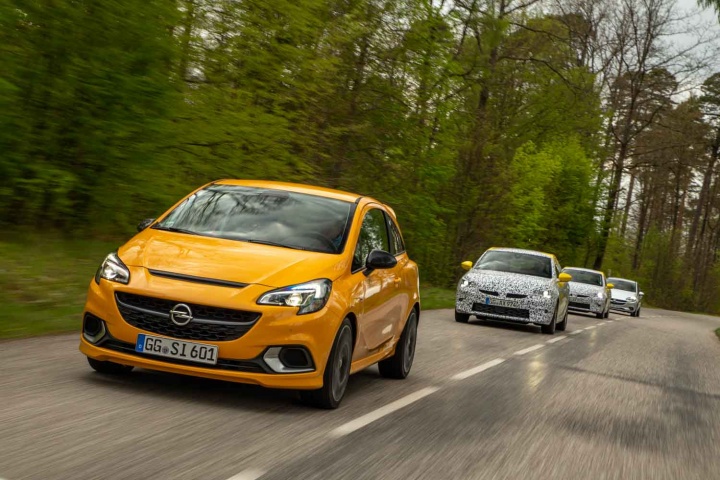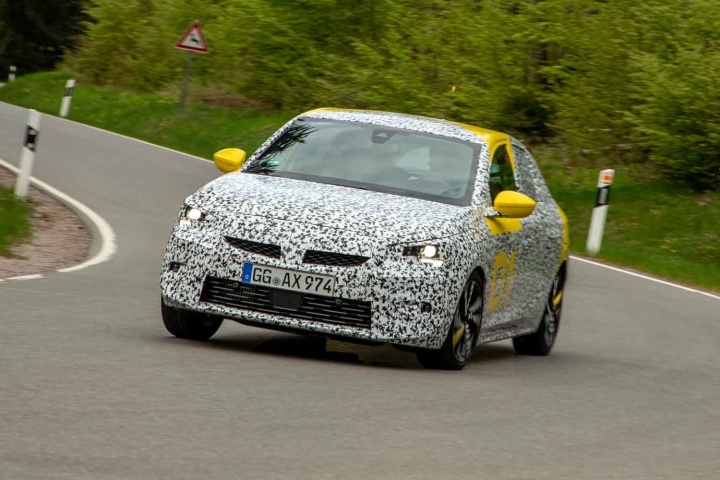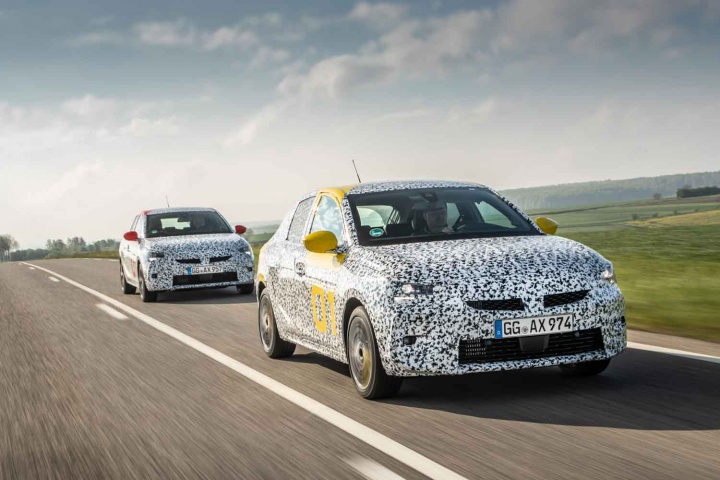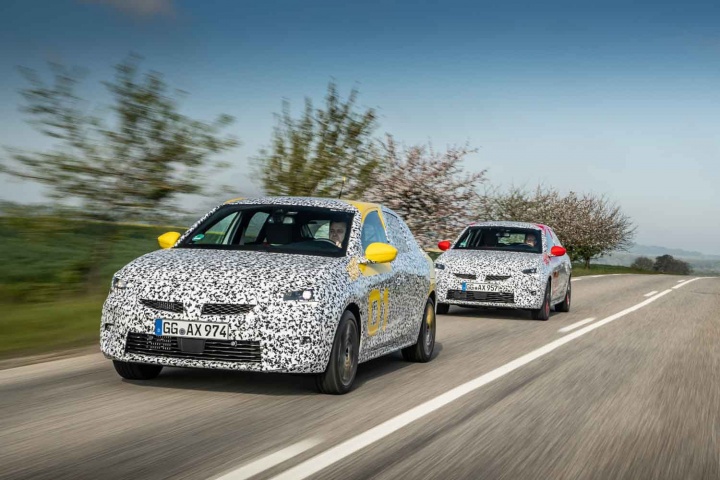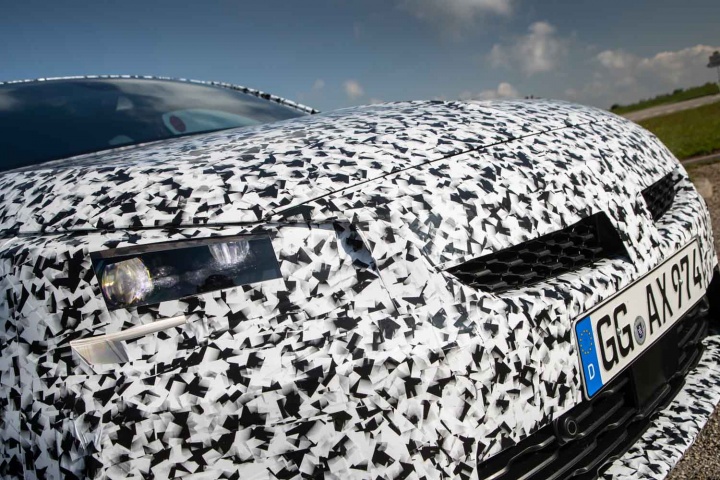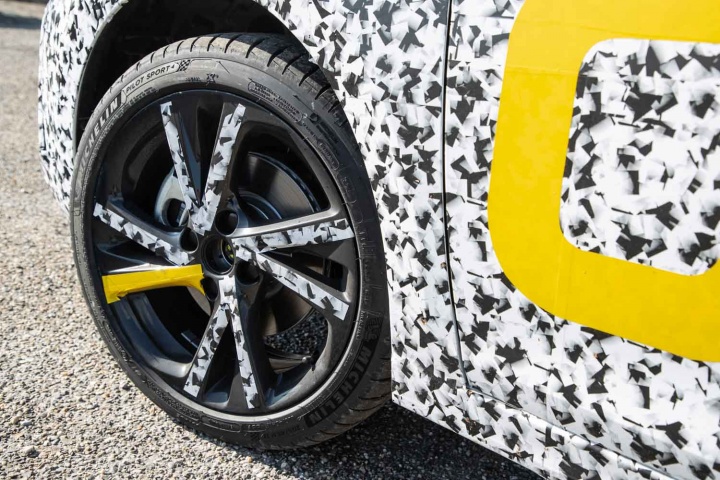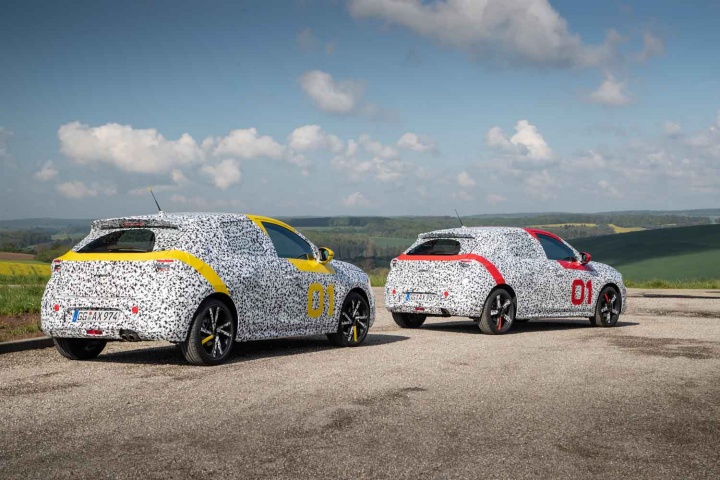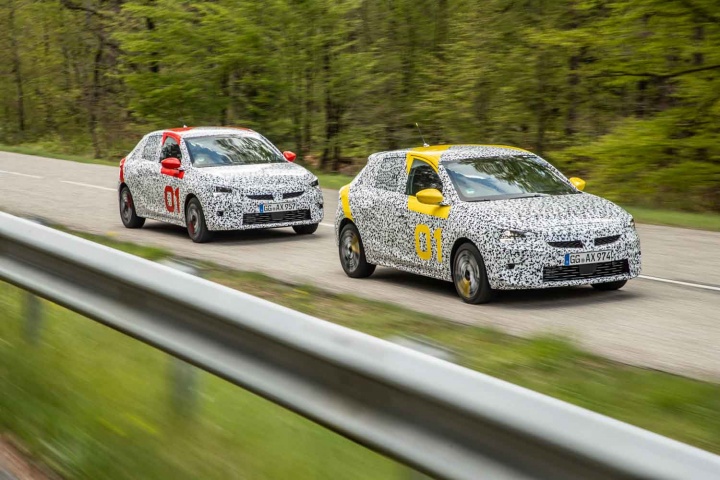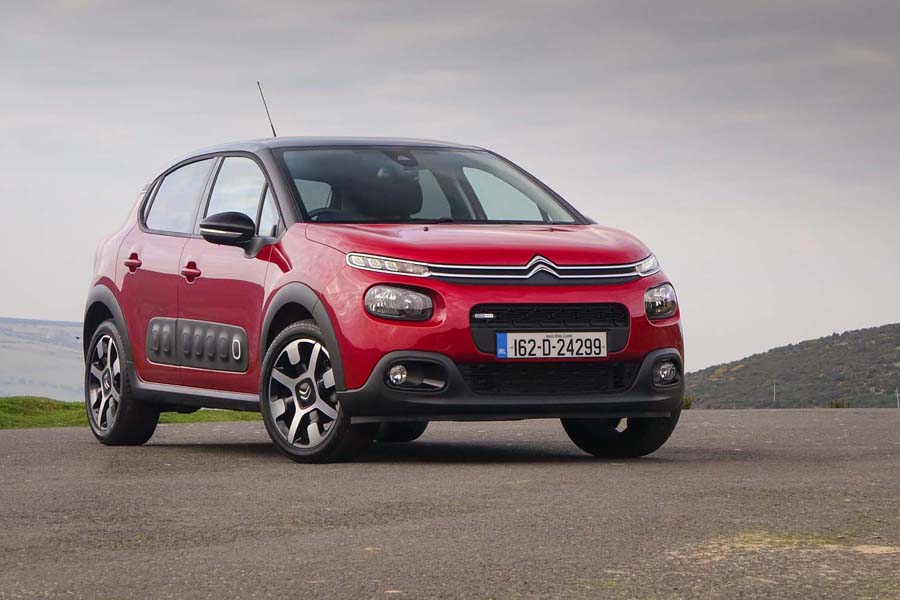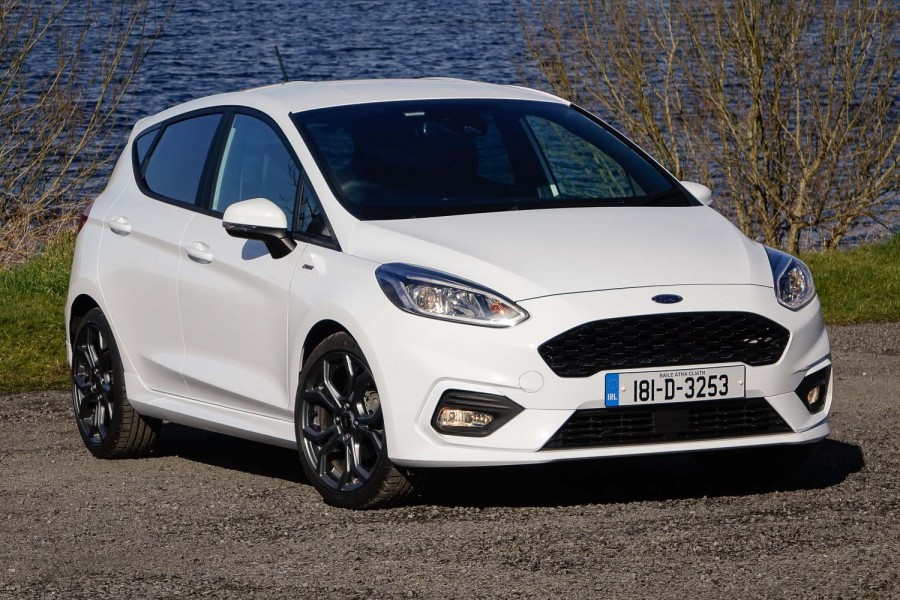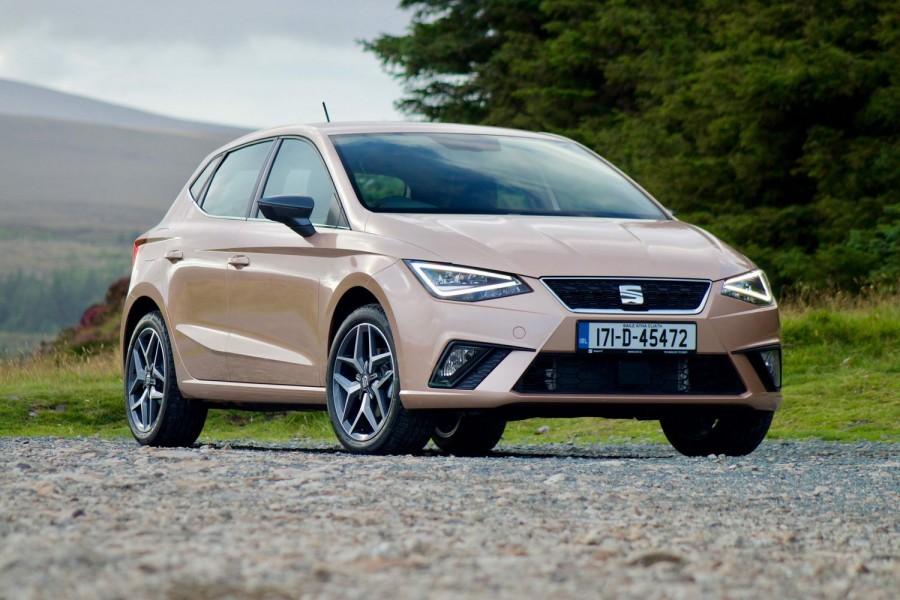A new generation of Opel Corsa will debut next month, not only the first to be available as a fully electric version, but also the first Corsa to be produced under Opel's recent partnership with the PSA Group that includes Citroen and Peugeot. Ahead of the finished car's debut, we joined Opel's engineers to test drive the Corsa as part of its final validation.
In the metal
For now, the Opel Corsa remains mostly hidden beneath the camouflage disguise it wears while testing on public roads, and some panels mask the actual shape of the car. We have seen a fully undisguised vehicle and, while it shares the same architecture as the new Peugeot 208 (built on the Common Modular Platform - CMP), the Corsa has a unique look and one that is much more modern and attractive than the company's more recent designs.
One of the significant changes is the move from a one-box profile to a two-box shape. So, where the previous generation Corsa had a bonnet that flowed directly into a very sloped windscreen starting close to the front of the car, this version has a more defined bonnet section that meets a windscreen that's further back and more upright. It gives the new Corsa a more mature shape in profile.
The Corsa is more or less the same size as before, but the roofline is now lower by 48mm. The seating position, measured as the hip point, is 28mm lower, thus contributing to a 3mm increase in headroom. The distance between the front and rear wheels grows by 28mm, while the front overhang decreases by 50mm, helping proportions. In the boot, there is a modest increase in capacity to 309 litres versus 285 litres in the outgoing model. The boot's aperture is also now a more useful shape.
Driving it
A great deal of work has gone into improving how this next generation of Opel Corsa will drive. The previous Corsa was essentially a reworking of an already reworked chassis, and it showed. Through the new shared platform Opel's engineering team have been able to integrate several new technologies and greater use of lightweight materials to enhance efficiency, and the by-product of many of these items is positive for the driving experience.
The body-in-white, the shell of the car in other words, is 40kg lighter than before, and an aluminium bonnet saves 2.4kg. All-aluminium engines save a further 15kg over the front axle and in the mid and rear of the car new seat designs result in a combined saving of 10kg. In total, the new Corsa is up to 108kg lighter depending on specification.
The engine line-up will include several versions of a 1.2-litre petrol engine with outputs ranging from 75- to 130hp and the choice of automatic and manual transmissions, while a 1.5-litre diesel producing 100hp paired with a manual gearbox will also be available. These will be followed up by a fully electric version in early 2020 promising a driving range of up to 340 kilometres.
We drove validation prototypes (which the engineering team say are more than 80 per cent production-ready) back-to-back with the previous Corsa. Starting with the 100hp 1.2-litre three-cylinder engine, one of the first things we noticed was that it didn't have as much of a characteristic thrum that three-cylinder engines often come with. It pulls well, is quite smooth and has satisfactory performance that should see this be the most popular engine option for the Corsa. What does let it down is the PSA-sourced six-speed manual gearbox. While the gearing is fine for town work and faster cruising in sixth, the change itself feels slack and is a weak point in an otherwise well-sorted car.
Switching things up to the more powerful 130hp version, which features the slick-shifting eight-speed automatic transmission, makes the Corsa feel like a different car, despite the lack of suspension differences. The gearbox shuffles through its ratios smoothly and without fuss, keeping the engine speeds moderately low. You can, if you wish, shift gear manually via the paddles behind the wheel and when the car's drive mode is set to Sport it also tweaks the transmission calibration. We found there wasn't quite as much of a change in the car's character with Sport mode engaged as we would have liked. Positively, it's something that the lead engineers also agreed with us on, so we expect the production version to receive further changes before we drive it later this year.
The ride quality is much more mature, with a well-damped secondary ride showing how much more of a sophisticated car this new Corsa should be. It certainly feels better honed, and one of the most impressive features of the chassis and suspension was how little body lean it has in the bends. The old Corsa, on the same roads, was nowhere near as impressive. Saying that, the pre-production cars rode on larger 17-inch wheels whereas the old Corsa ran on 16s.
Moreover, the new Corsas were also shod with grippy Michelin Pilot Sport 4 tyres, versus Continental Eco Contact 6 tyres on the predecessor. These factors would likely have flattered the new car's performance. But grip aside, there's no doubt that the upcoming Opel Corsa should be the best generation to date from behind the wheel.
What you get for your money
It's still too soon to comment on specifications or prices for the new Opel Corsa, so we can't score this section yet. There will be at least three specification grades with mid-range models getting features such as LED headlights. Opel will also introduce the latest version of its LED IntelliLux matrix headlights, which are likely to be reserved for range-topping models or available as an optional extra.
Summary
Our test of the pre-production version shows that the upcoming Opel Corsa should be a car that's full of promise, helping small cars retain relevance in a world increasingly populated by crossovers and compact SUVs. Considering the greatly reduced development time that Opel had to create this car following the PSA Group takeover, its team of engineers have done a very good job. And while they agree that there is still some more work to be done, the next-gen Corsa should be a strong competitor when it arrives later this year.

